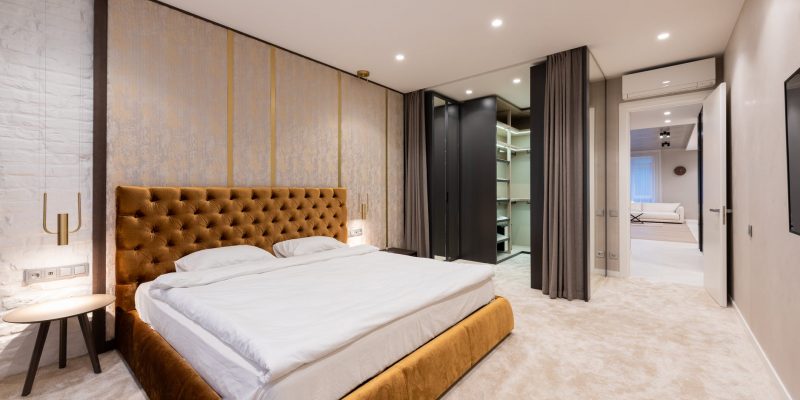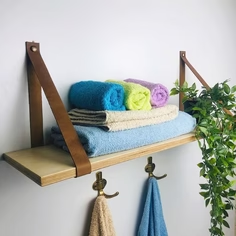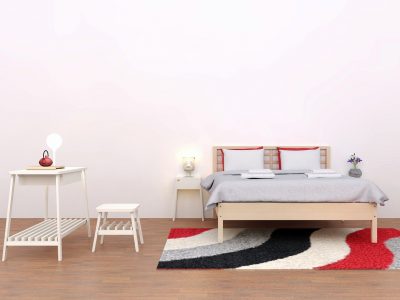As something of a quality pair of pants, an innerspring mattress has never been out of trend. Its concept is inspired by the upholstered material that absorbs shocks for use in horse-drawn coaches throughout the 1880s. Innerspring mattresses became the greatest common type of sleep base by the 1930s, and they are still present. All masterpieces, however, may grow with the years.
Today’s modern innerspring mattresses are better than ever before, attributable to major developments, including greater materials, specifications, and production processes that minimize motion transmission and squeakiness. Innerspring mattresses are the most frequently used mattresses almost all across the world. Due to their bounciness, they are more preferable to other mattress types.
There is much more to innerspring mattresses than their coils. Are you out shopping for a new innerspring mattress? From underneath the covers, including how to determine durability to how much of the sleepers it seems to be ideal for, here is most of what you need to learn.
What are innerspring mattresses?
The metal support coils that make up the core of an innerspring mattress give the bed its name. For added comfort, functionality, and longevity, most innerspring mattresses have included layers made of various materials, such as memory foam and latex. The innerspring mattress, on the other hand, is defined by that crucial feature of being bouncy.
We are going into some details about the ideal candidates for innerspring mattresses; but there is more to these mattresses. Find more information here.
The Interior of Innerspring mattresses
Most innerspring mattresses have a few key components in common. These are the essential features to look for when comparing products:
Coils:
How an innerspring mattress appears, how long it stays, and what it costs ultimately depend on the nature and construction of coils. Coils are divided into four categories:
Bonnell
These are the earliest and most fundamental mattress springs, generally characterized as “open” coils. Bonnell coils are hourglass-shaped and frequently linked together to make a continuous unit. This keeps them tough, but they’re not great at managing movement transmission.
Offset Coils
These are hourglass-shaped, resembling Bonnell coils; however, “the bottom of the coil is misaligned when compressed to provide a bit of just a fixating effect,” as per Fish. They may perfectly complement the body’s natural curvature due to the obvious hinged effect.
Continuous coils
Continuous coils are somewhat similar to offset Coils. The only difference is that continuous coils have multiple sets of single words folded as circular shapes.
Pocket Coils
Since pocketed springs are individually wrapped in cloth, they may function independently and effectively conform to the sleepers’ body than uncovered coils. On higher-end innerspring mattresses, encapsulated coils are conventional.
Coil count and coil gauge are two less essential coil characteristics to consider. Traditionally, higher coil ratios were linked with higher quality mattresses, but it is no longer the case. The kind of springs and the materials utilized in the mattresses are so much more significant determinants of innerspring mattress durability.
The thickness of a coil is measured in a coil gauge. The gauge number indicates how thin and flexible the spring is. A greater gauge is recommended if you want a soft bed, but a lower gauge typically lasts lengthier. Unless you’re a heavier individual, stronger springs are wiser because they can provide more support.
The Layers of Comfort in an innerspring mattress
The mattress may be classified as a “hybrid” if it has a coil support system and perhaps another substance, generally memory foam, based on the number or kind of layers. These are the layers you’ll most frequently discover when analyzing innerspring mattresses:
The Comfort Layer
The comfort layer is the top layer of the mattress that delivers comfort and pressure relief. It is normally manufactured of memory foam, latex, or perhaps another type of foam.
The Cooling Substances
Considering foam’s tendency to retain body temperature, some mattresses feature cooling technologies in the underlying foam infrastructure like cool gel or graphite.
The Comfort Coil Layer
Many innerspring mattresses use a coil-over-coil design on the top of the steel coil core that also adds a second session of separately pocketed coils. The base coils are stronger and give a more consistent and resilient support core, whereas the top coils are lighter and provide sculpting for comfort and reduced movement transmission.
Pillow Top
On the upper surface of the mattress, there is just another layer of padding. Pillow toppers are classified into two parts: Euro-style and conventional. A standard pillow top would be stitched onto the mattress’s upper surface, creating a space between the pillow top and the mattress.
A Euro pillow top’s padding is tucked into the mattress’s protective surface, parallel with the mattress’s corners. In addition to giving the mattress a cleaner appearance, Euro pillow tops will not move or lose form the way a standard pillow top will.
The Outer Cover
The outer shell protects all of these layers and components. A soft, ventilated, and moisture-wicking mattress covering is appropriate for optimal sleep comfort.
Who is a suitable candidate for an innerspring mattress?
It’s safe to assume that one of the reasons innerspring mattresses have remained popular over time is that they accommodate various sleeping habits. Depending on your favorite sleeping position, seek the following elements in an innerspring mattress:
For the side sleepers
To cushion pressure points caused by the shoulders and hips to relieve pain and feel relaxed, side sleepers require a softer, or “plush,” innerspring mattress.
For the back sleepers
Back sleepers are most comfortable on a medium-firm innerspring mattress, though they can sleep on various firmnesses. The most vital aspect for a back sleeper is adequate lumbar support, which prohibits the hips from sinking too much into the mattress.
For stomach sleepers
Although stomach sleeping is generally perceived to be the unhealthiest posture, stomach sleepers can still be pleased with the appropriate hardness level—that is, firm enough to prohibit hips from dropping as well as the spine from tilting awkwardly. Innerspring mattresses provide the stomach sleepers with the right amount of comfort and firmness to enjoy deep sleep.
Conclusion
As we all know, innerspring mattresses are known to be the ultimate source of comfort and support and provide a pain-free sleep. Everyone uses them most frequently. If you haven’t yet tried out an innerspring mattress, then you must now. It will give you a feeling like never before and will ease your nights for you.




















